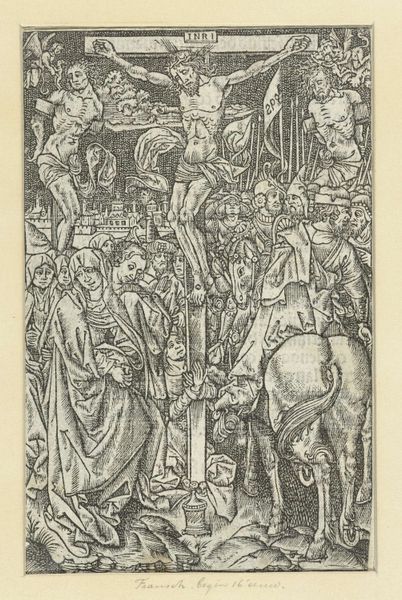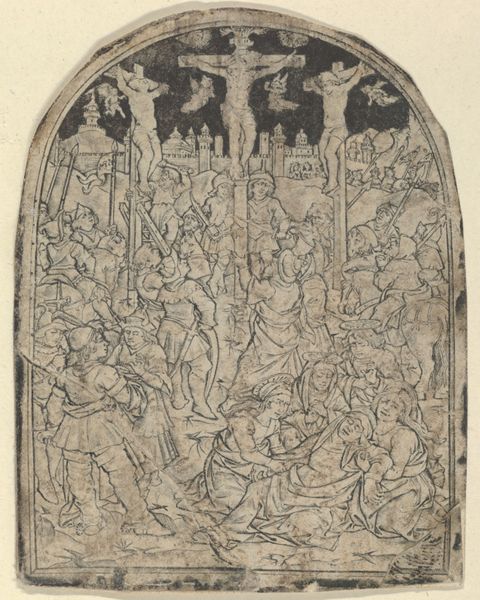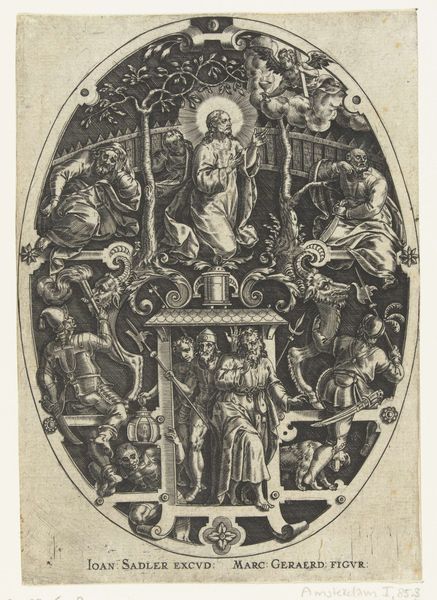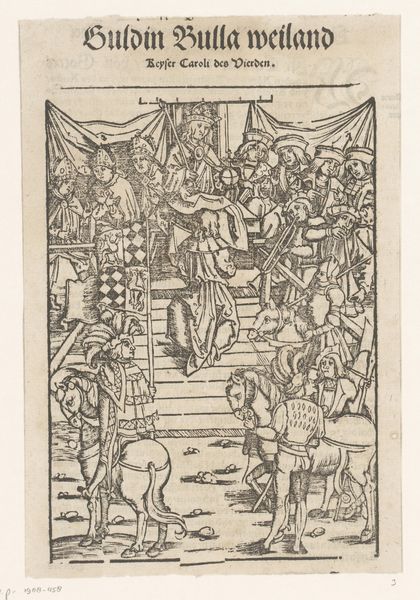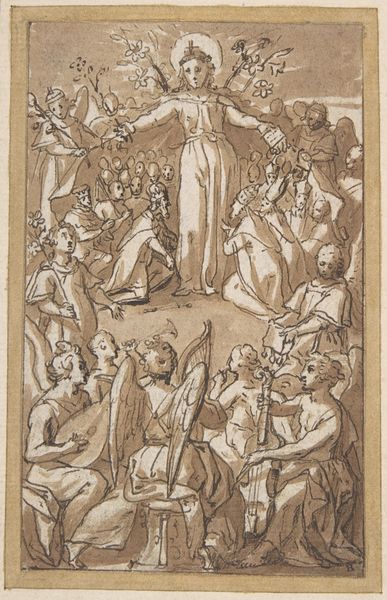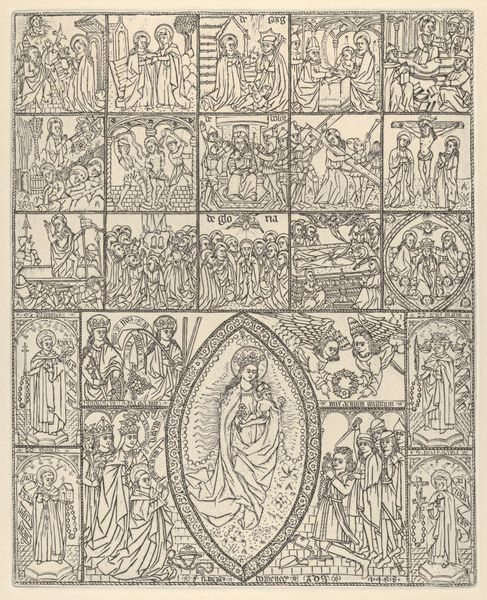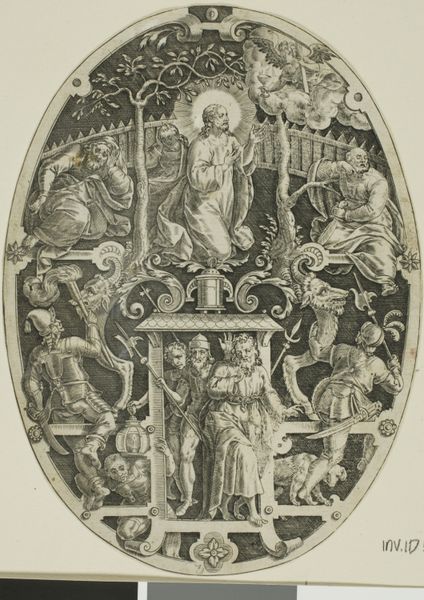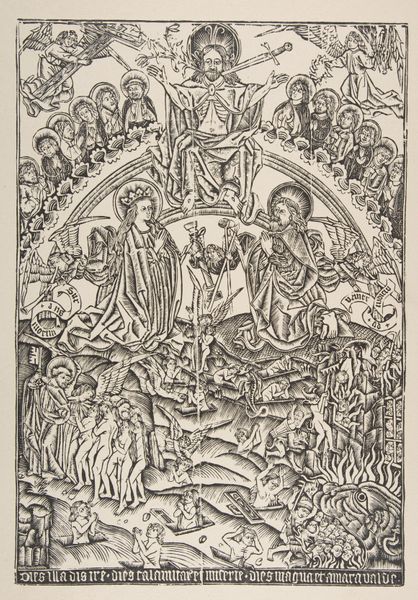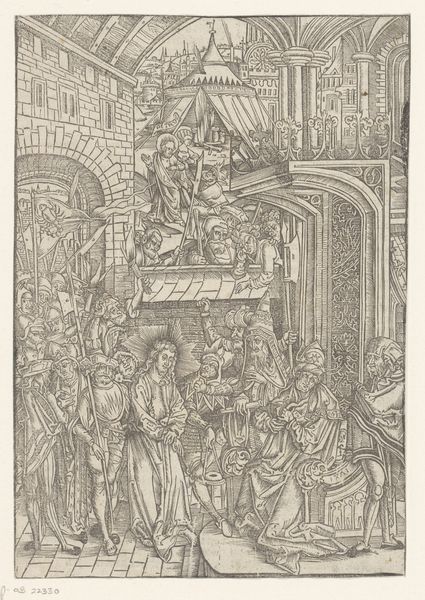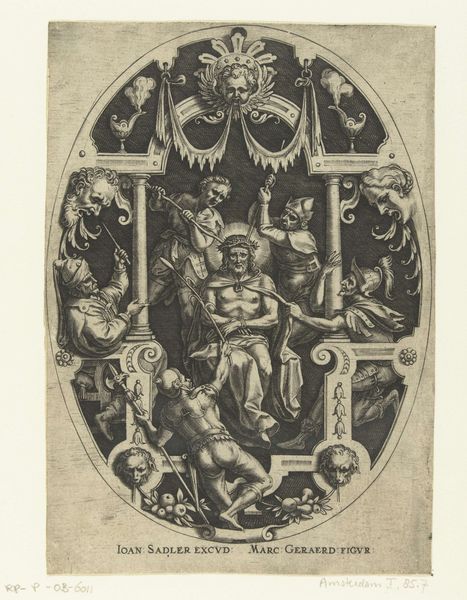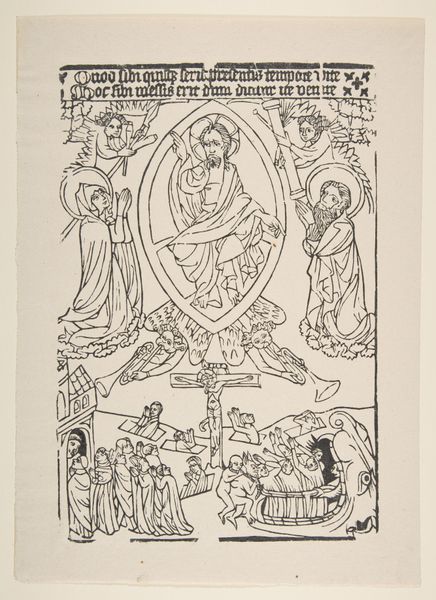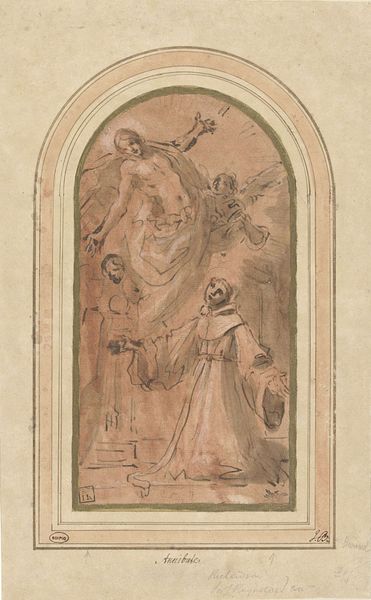
drawing, print, intaglio, engraving
#
drawing
#
medieval
#
pen drawing
# print
#
pen illustration
#
pen sketch
#
intaglio
#
old engraving style
#
figuration
#
11_renaissance
#
line
#
history-painting
#
engraving
Dimensions: height 112 mm, width 75 mm
Copyright: Rijks Museum: Open Domain
This image of Saint Dominic was made in the 16th century by an artist known only by the monogram S, using the technique of engraving. The intricate lines that define the figures and foliage were achieved by carefully incising a metal plate, probably copper, with a tool called a burin. Ink would have been applied to the plate, then wiped away, leaving ink only in the engraved lines. The plate was then pressed onto paper, transferring the image. The process of engraving demands precision and control, requiring years of training to master. The quality of the line is determined by the pressure applied and the angle of the burin, giving the artist considerable expressive range. What might seem like a simple monochrome image is actually the result of skilled labor, transforming base metal into a vehicle for spiritual and aesthetic expression. This detailed, hand-made quality invites a deeper appreciation, challenging any assumptions about the divide between craft and fine art.
Comments
No comments
Be the first to comment and join the conversation on the ultimate creative platform.

